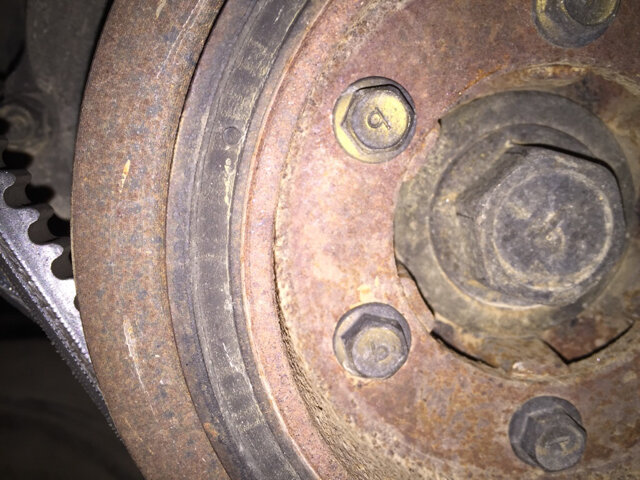I saw something like this way back many years ago, the vibration was more pronounced as the engine was a four cylinder, coincidently it was a Toyota.
Run great at higher revolutions badly at idle, it was a carb engine so no injector, no air leaks etc, valve clearances good, compressions perfect.
Drove me around the bend and decided to pull the head because it gave all the sounds of a leaking valve.....it was!
Over the years the carbon build up around one of the valve stems was SLOWING the valve down from closing.
If you turned the engine by hand or cranked you could not hear any problems and the gauge showed all was well however, at idle speeds the valve was closing enough to miss the piston but not fast enough to seal the cylinder, only seen this once in more years than I care to remember under the bonnet. Whilst not showing up on hand cranking as yours does, this could be attributed to the diesel engine being higher in compression?
I see you mentioning a broken ring but that would be a very rare occurrence, over revving an old engine with a wear ridge at the top of the cylinder allowing the piston/rod/crank assembly to 'stretch' could cause the top ring to break but you do not sound as though you are a 'thrasher'. Ring failures tend to be attributed to poor assembly and tend to show up within the first few thousand miles with crankcase compression, more so if the crack was in line with the lower ring gap.
Many may of heard an 'ol boy' pootling around the town for years on end and never having an engine problem, the car has ultra low miles (but many hours of running) and gets sold on to a 'boy racer' who by 'bad luck' destroys the engine within a few days of purchasing, seen it oh so many times.
So don't stress about the rings......just yet, fingers crossed for a choked valve stem, or sticking valve.
regards
Dave
Run great at higher revolutions badly at idle, it was a carb engine so no injector, no air leaks etc, valve clearances good, compressions perfect.
Drove me around the bend and decided to pull the head because it gave all the sounds of a leaking valve.....it was!
Over the years the carbon build up around one of the valve stems was SLOWING the valve down from closing.
If you turned the engine by hand or cranked you could not hear any problems and the gauge showed all was well however, at idle speeds the valve was closing enough to miss the piston but not fast enough to seal the cylinder, only seen this once in more years than I care to remember under the bonnet. Whilst not showing up on hand cranking as yours does, this could be attributed to the diesel engine being higher in compression?
I see you mentioning a broken ring but that would be a very rare occurrence, over revving an old engine with a wear ridge at the top of the cylinder allowing the piston/rod/crank assembly to 'stretch' could cause the top ring to break but you do not sound as though you are a 'thrasher'. Ring failures tend to be attributed to poor assembly and tend to show up within the first few thousand miles with crankcase compression, more so if the crack was in line with the lower ring gap.
Many may of heard an 'ol boy' pootling around the town for years on end and never having an engine problem, the car has ultra low miles (but many hours of running) and gets sold on to a 'boy racer' who by 'bad luck' destroys the engine within a few days of purchasing, seen it oh so many times.
So don't stress about the rings......just yet, fingers crossed for a choked valve stem, or sticking valve.
regards
Dave
Last edited:





